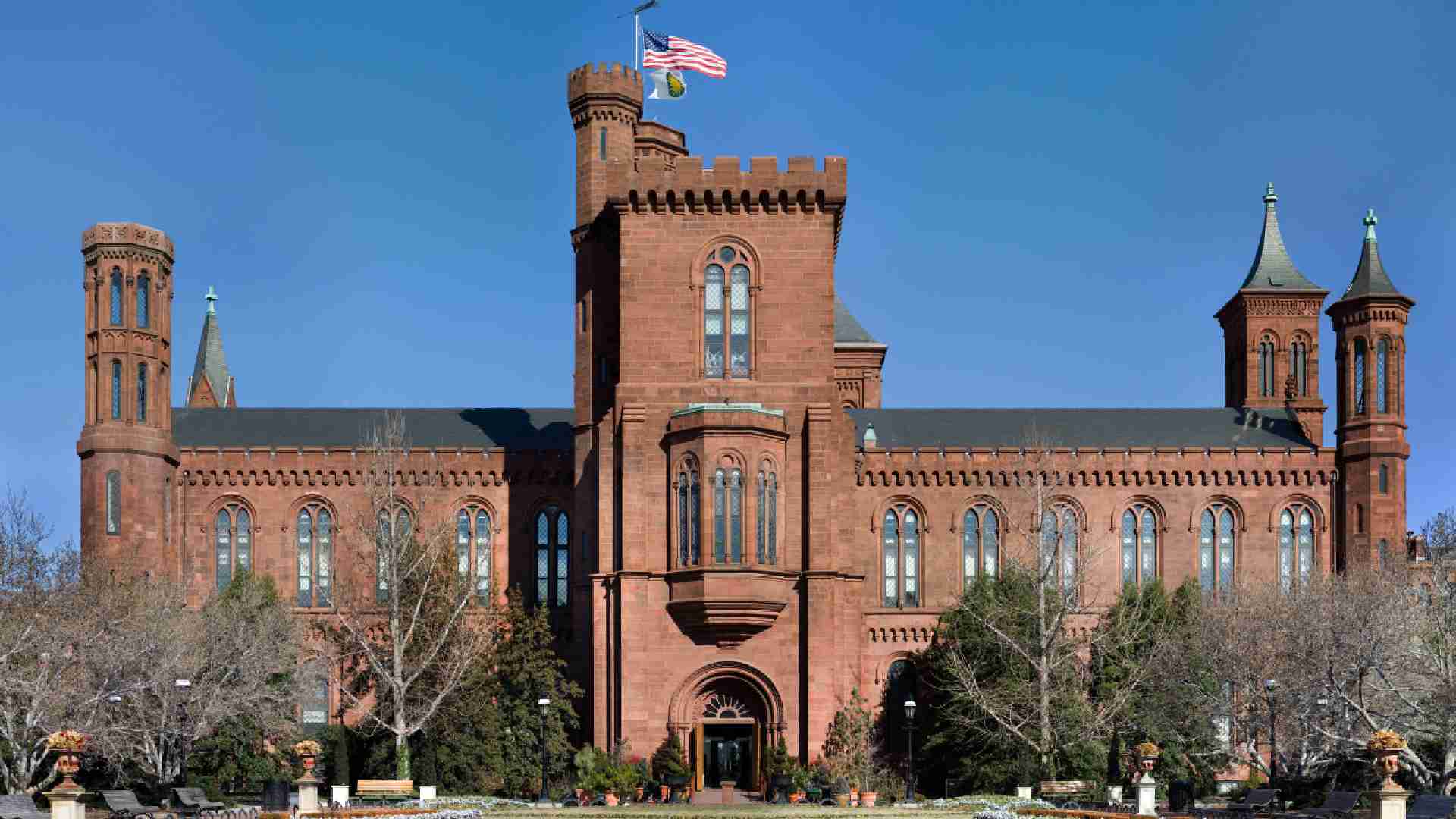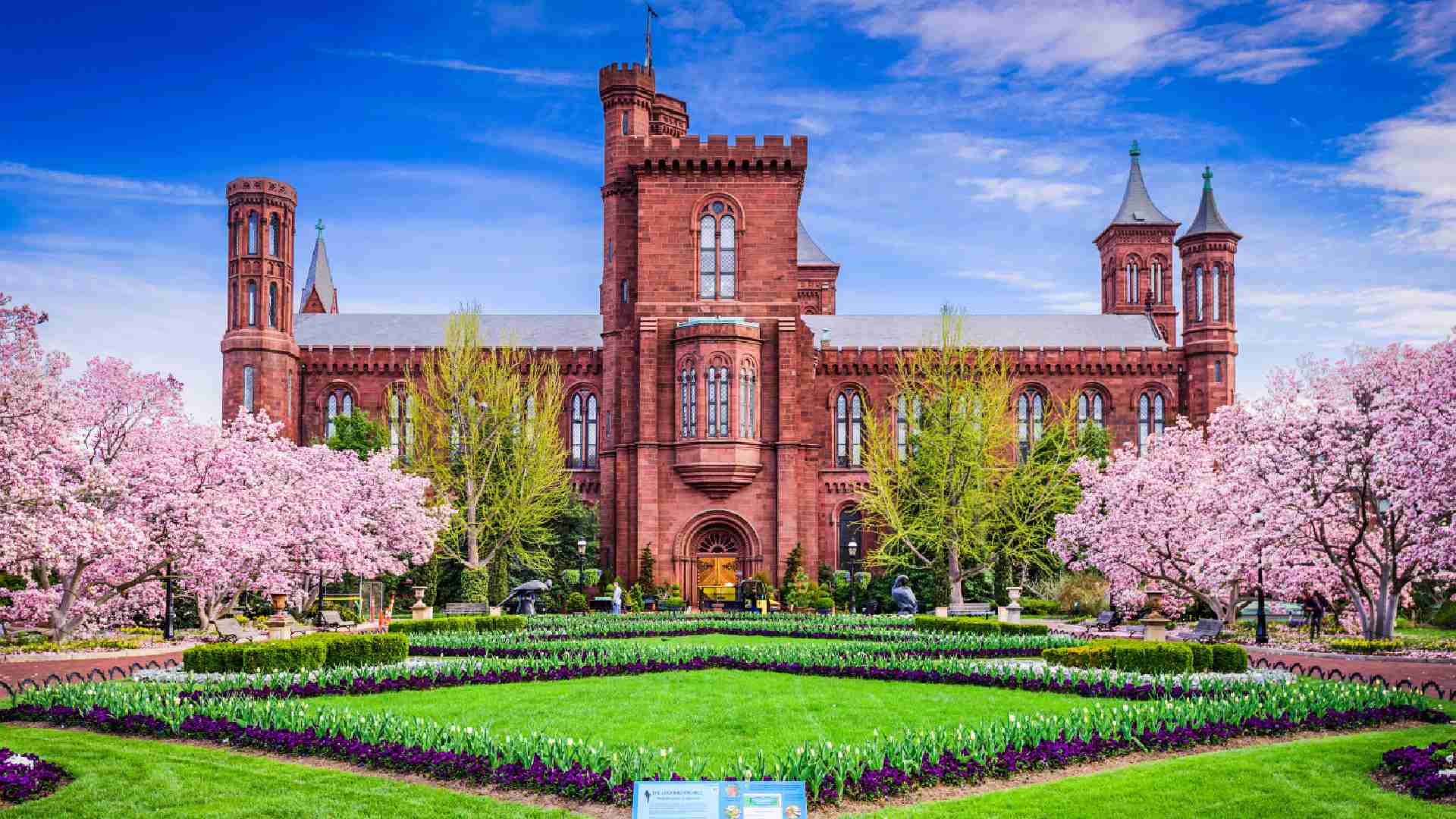
The Smithsonian Institution, Washington, D.C. :
The Smithsonian Institution is a renowned group of museums, research centers, and educational institutions located in Washington, D.C. It is one of the world’s largest museum and research complexes. Here’s a detailed description of the place:
Visitor Fee:
Admission to the Smithsonian museums in Washington, D.C., is free. Visitors can explore the various museums and attractions without any entrance fee. However, certain special exhibitions, IMAX films, and programs may have separate admission fees. It’s recommended to check the specific museum’s website for information on any additional fees or timed entry passes for popular exhibitions.
Transportation:
Visitors can reach the Smithsonian Institution using various means of transportation:
- Metrorail: The Washington Metropolitan Area Transit Authority (WMATA) operates a convenient Metrorail system in D.C. Several Smithsonian museums are located near the National Mall and are easily accessible from nearby Metro stations, including Smithsonian, Federal Triangle, and L’Enfant Plaza.
- Bus: The city’s bus system, also operated by WMATA, offers several bus routes that stop near or around the National Mall and the Smithsonian museums. Visitors can check the WMATA website for bus schedules and routes.
- Bicycle:C. has an extensive bike-sharing program, called Capital Bikeshare, with stations located throughout the city. Visitors can rent a bike and cycle to the Smithsonian museums, utilizing the city’s bike lanes and trails.
- Walking: Many of the Smithsonian museums are located within walking distance of each other on or near the National Mall. Visitors can enjoy a leisurely walk while exploring the museums and attractions.
Things to Do:
- Visit the Museums: The Smithsonian Institution comprises multiple museums, each with its own focus and exhibits. Some prominent museums on the National Mall include the National Air and Space Museum, National Museum of Natural History, National Museum of American History, and National Gallery of Art. These museums showcase a wide range of topics, from art and culture to science and history.
- Explore the National Zoo: The Smithsonian’s National Zoo, located in the Woodley Park neighborhood, is home to over 2,000 animals from around the world. Visitors can see giant pandas, lions, elephants, and other fascinating species. The zoo also offers educational programs and interactive exhibits.
- Attend IMAX Films and Planetarium Shows: Some Smithsonian museums feature IMAX theaters and planetariums that offer immersive film experiences and captivating shows about space, nature, and scientific discoveries.
- Participate in Educational Programs: The Smithsonian offers a variety of educational programs, workshops, and lectures for visitors of all ages. These programs provide opportunities to learn from experts, engage in hands-on activities, and explore specific areas of interest.
- Enjoy Special Exhibitions and Events: The Smithsonian museums host temporary exhibitions, special events, and cultural festivals throughout the year. These exhibitions showcase unique collections, highlight specific themes, and provide insights into various aspects of art, science, history, and culture.
List of Activities:
- Guided Tours: Many of the Smithsonian museums offer guided tours led by knowledgeable docents and experts. These tours provide in-depth information about the exhibits, artworks, and historical significance of the collections.
- Hands-On Activities: Some museums, such as the National Museum of American History, offer interactive exhibits and hands-on activities where visitors can engage with artifacts and historical objects.
- Workshops and Demonstrations: The Smithsonian museums occasionally host workshops and demonstrations that allow visitors to learn about specific crafts, scientific experiments, or artistic techniques. These activities provide interactive and immersive experiences.
- Live Performances: Some museums, such as the Smithsonian American Art Museum, organize live performances, including music concerts, theatrical productions, and dance performances, that showcase the richness of American culture.

Why People Enjoy Coming Here:
People enjoy visiting the Smithsonian Institution for several reasons:
- Vast and Diverse Collections: The Smithsonian’s museums house extensive and diverse collections, encompassing art, history, science, culture, and more. Visitors can explore a wide range of topics and discover artifacts and exhibits that captivate their interests.
- Educational and Informative Experience: The Smithsonian provides educational resources, exhibits, and programs that offer enriching experiences for visitors of all ages. The museums are known for their high-quality displays, engaging multimedia presentations, and informative labels that enhance learning and understanding.
- Cultural and Historical Significance: The Smithsonian’s collections showcase the cultural and historical heritage of the United States and the world. Visitors can delve into different eras, civilizations, and artistic movements, gaining a deeper appreciation for human achievements and the diversity of human culture.
- Accessible to All: The free admission policy of the Smithsonian museums makes them accessible to a wide range of visitors. People from all backgrounds can enjoy and appreciate the exhibits without financial barriers.
- Special Exhibitions and Events: The Smithsonian frequently hosts special exhibitions, events, and festivals that attract visitors with their unique displays, cutting-edge research, and engaging programming. These events offer fresh perspectives and provide opportunities to learn about current trends in science, art, history, and culture.
Age of the Place:
The Smithsonian Institution was established in 1846, making it over 175 years old as of the knowledge cutoff in September 2021.
Additional Nearby Attractions:
- National Mall: The National Mall, located near the Smithsonian museums, is a significant historical and cultural park that houses iconic monuments, memorials, and landmarks, including the Lincoln Memorial, Washington Monument, and Vietnam Veterans Memorial.
- United States Capitol: Situated at one end of the National Mall, the United States Capitol is the seat of the U.S. Congress. Visitors can take guided tours of the Capitol building to learn about its history, architecture, and the democratic process.
- The White House: Located nearby, the White House is the official residence and workplace of the President of the United States. While public tours are limited, visitors can still appreciate the historic significance and iconic presence of this renowned landmark.
- The National Archives: Just a short walk from the Smithsonian museums, the National Archives houses important historical documents, including the Declaration of Independence, the U.S. Constitution, and the Bill of Rights. Visitors can explore the exhibits and view these historic artifacts.
- The National Portrait Gallery: Situated a few blocks from the National Mall, the National Portrait Gallery showcases portraits of notable figures in American history. It provides an engaging and artistic exploration of individuals who have shaped the nation’s culture and society.